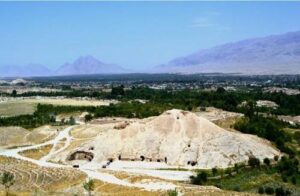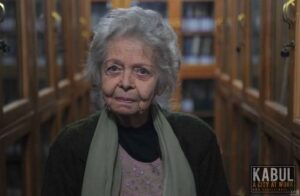
KABUL (SW): The 21 February is named as the International Mother Language Day by UNESCO. UNESCO has been celebrating International Mother Language Day for nearly 20 years with the aim of preserving linguistic diversity and promoting mother tongue-based multilingual education.
The United Nations General Assembly also proclaimed 2008 as the International Year of Languages, due to the importance of the mother tongue in the learning process for students.
Afghanistan is a country with different ethnic groups and languages that is recognized in its constitution. Article 16 of the constitution states that Pashto and Dari are the official languages of the country, but in the areas where the majority of people speak one of the languages of Uzbeks, Turkmen, Pashayei, Nuristani, Baluchi, or Pamiri, the language in use in addition to Pashto and Dari is recognized as the second official language and its implementation is protected by law.
However, textbooks in the Ministry of Education and the Ministry of Higher Education have been compiled and published in Pashto and Dari languages. Therefore, even in those areas where over 90% of the populations speak a language other than Pashto and Dari, students are compelled to lean in one of these official leagues of the country.
In the recognition of the International Mother Language Day, we went to the Academy of Sciences of Afghanistan. ASA has departments covering several languages in the country, including languages that are less well-known.
Amanullah Ziayi, a member of the Department of the Uzbek language, criticized the government’s negligence of his mother tongue. No attention has been paid to the minor languages of the country so far, he said. In the areas where Uzbeks live, while the students still know nothing about their mother tongue and the school curriculums are taught in Pashto or Dari, this causes the cultural isolation of minority languages and cultures, but also damages the cognitive learning process of students in the country where minority students live, he added.
According to Mr. Ziayi, so far no educational institution has a department for Uzbek language and hence no teacher has been trained in this language across the country.
However, according to the officials at the MoE, textbooks from grade 1 to 12 have been printed in the Uzbek language, but due to financial constraints, these books have not been printed enough to satisfy the needs of all the students in the whole Uzbek populated areas. Therefore, the only thing that the MoE has done is to order the teachers in the Uzbek populated areas to teach the Uzbek language for one hour to students after the official school hours.
On the other hand, Khair Mohammad Haidary, head of the Department of the Pamir language department of the ASA told Salam Watandar that fearing the disappearance of the Pamir language has caused the majority of the Pamiri people to speak and study in Dari. Pamiri language is still not included in the MoE curriculum, he said.
According to researches done at the ASA, the independent Alphabets, the grammar book and the “comparative grammar book of Pashto and Shaghnani” have been published and printed for Pamiri language; however there are still no books printed in the special native language, Mr. Haidary added.

Pamiri language has Avestan root and many people in various districts of Badakhshan are speaking this language. This language has seven sub-branches including “Shaghnani, Wakhani, Manjani, Askhashimi, Sanglichi, Zebaki, and Serghilani”.
The Uzbek and Pamiri languages are not the only languages that are in danger of disappearing; the Pashayei language is also in the verge of disappearing. Mohaqiq Lamwal, as he himself said that he has spent more than 20 years of his life enriching the Pashayei language. He said he has written many books in Pashayei language which includes short stories, and fairy tale books for children.
Mr. Lamwal said that so far 22 books have been written on the culture, language, traditions, and customs of the Pashayei people and language. In addition to this, a textbook has been written for grade 1 to 12 which includes all the curriculum of the school, however, for some reason, this book has not been distributed to students in the Pashayei areas.
Mr. Lamwal urged the government especially the MoE to include the Pashayei language in the school curriculum and to introduce literary books in the Pashayei language as well.
The Pashayei language is spoken in the provinces of Parwan, Kapisa, Laghman, Nangarhar, Kunar, Nuristan and Kandahar.
In 1952, students from various universities in the city of Dhaka, the current capital of Bangladesh, at that time called East Pakistan, including the students from the University of Dhaka and its medical faculty, held a peaceful demonstration to nationalize Bengali as the second official language of Pakistan (along with the Urdu language). However, police shot fires at demonstrators and few demonstrators were killed. Following the independence of Bangladesh from Pakistan, on the request of this country and the due to respect for linguistic and cultural diversity, for the first time, UNESCO named the 21 February as the International Mother Language Day on November 17, 1999.
ENDS





